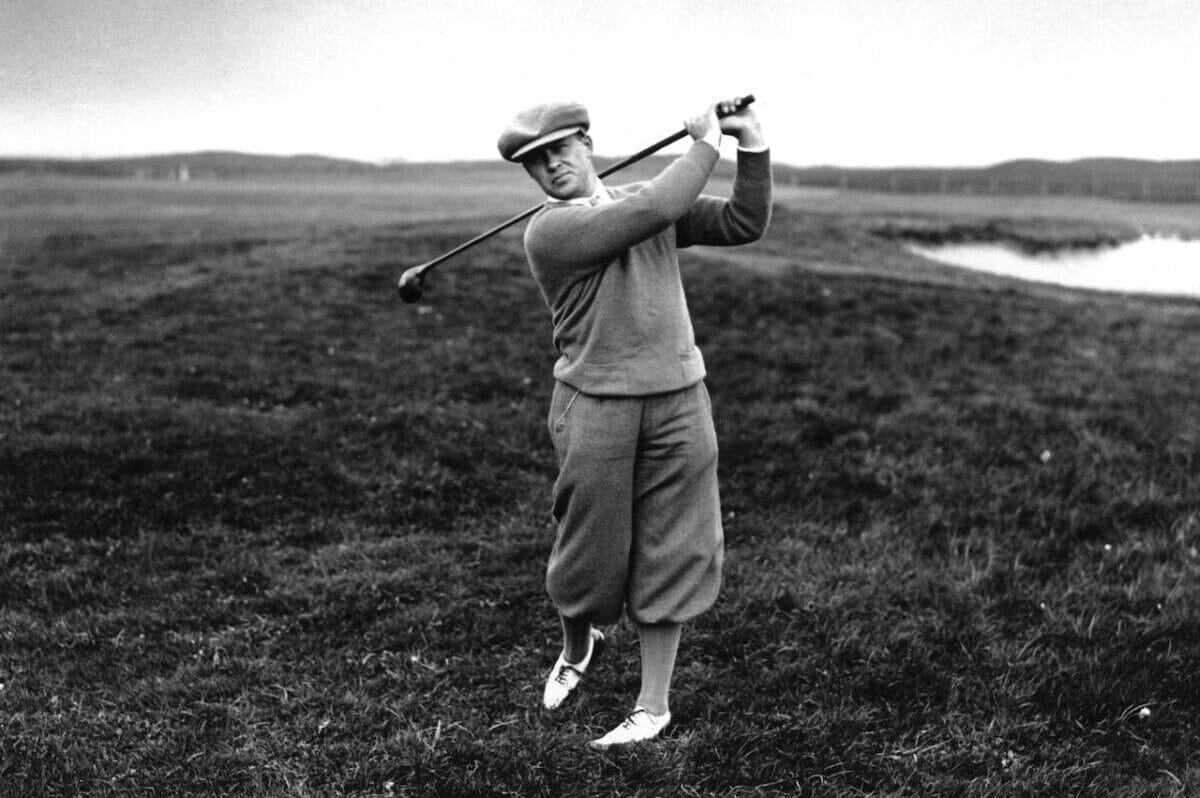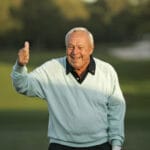The Rules of Golf are constantly changing, which is hard to believe considering the glacial pace at which they can be ‘under discussion’ before any amendment is decided. Tedious deliberations are no guarantee of avoiding contentiousness: none more so than those governing handicapping and amateur status.
Bob Jones, founder of The Masters Tournament and the poster boy for amateur golf worldwide throughout the 1920s, enjoyed many expensive gratuities and perks without sanction until 1927 when the USGA was obliged to shout: “Stop!”
Jones went too far and accepted the keys of a house worth $50,000 ($800,000 in today’s values) from the mayor of his hometown, Atlanta. The adverse fallout put Jones’s ‘secret’ ambition to win the ‘Impregnable Quadrilateral’ consisting of both Opens and Amateur Championships on either side of the Atlantic in jeopardy. Corinthian ideals of the “gentleman amateur’ were re-established by Jones promptly back-peddling and issuing a statement renouncing the gift.
The R&A and USGA responded favourably stating: “The much-criticised situation has been smoothed by Jones’s action which will be much admired”.
The economic depression of 1929 hit Atlanta hard enough to affect most of its citizens. But don’t feel sorry for Bob Jones. His income from 1931 to 1933 added up to nearly $2million in today’s values.
Upon the close of the 1930 golfing season when the Impregnable Quadrilateral was achieved, Jones withdrew from competition to concentrate on family affairs and lawyering.
Among Jones’s other ‘après golf’ endeavours were starring in Warner Brothers films: “How I Play Golf” and “How To Break 90”, serving as Vice President of Golf Club Research and Design for A.G. Spalding & Co., sale of clubs adorned with his name, the design and construction of Augusta National where he established The Masters Tournament, publishing five books on golf, appointment as Honorary V.P. of the PGA, and serving as Ambassador of Golf worldwide including the inaugural World Amateur Team Championship at St. Andrews in 1958, which prompted the USGA to “definitely state that R. T. Jones Junior is no longer eligible to compete as an amateur”.
It made no difference. Bob honoured his pledge never to become a professional golfer by playing for prize money. A tighter rein on amateur status policy was maintained in the succeeding years. Most notably, Harvie Ward was suspended from 1957 to 1958 when he accepted $11,000 in expenses from his employer to fund his competing in (and winning) the 1952 British Amateur Championship, 1954 Canadian Amateur and back-to-back US Amateurs in 1955 and 1956.
It is fair to say that throughout the 19th and early 20th centuries, the rules governing amateur status were imprecise. Take the case of the Liverpool golfer, John Ball, who won a record eight Amateur Championships between 1888 and 1912. In 1878, as a 16-years old prodigy, Ball travelled to St. Andrews in the company of Old Tom Morris’s nephew, Jack Morris (Ball’s club pro at Hoylake) to play in The Open Championship.
Ball was lying in joint-second place three strokes off the lead with 18-holes to go – eventually finishing 8 behind Jamie Anderson, winning his second of three titles. Old Tom was so delighted with young Ball that he handed him the £1 prize money for fourth place, saying: “Put that in your pocket, son. You deserve it”.
Nobody thought anything of an amateur receiving a money prize until The Amateur Championship was constituted in 1885. Ball (now a full-time farmer and the best golfer in England) was only allowed to play after an objection was overruled. Three years later, when Ball won the Championship for the first time, he received £8 and a medal and was permitted to purchase a double-barrelled shot gun “to help keep the rabbits on his farm back home under control”.
To engage in golf at championship level has always been expensive; prohibitively so these days. A full-time commitment to top level amateur golf is unsustainable for many excellent golfers.
Legislation passed in the US Congress in 2021 has forced dramatic changes in the rules of amateur status to allow payment for the use of a player’s name, image or likeness (NIL). Signing on fees (with agents) while still an amateur is also allowed. Deals with equipment companies, for monetary reward, not just free gear, are ‘fair game’.
Agents are pouncing on anyone who can string a few good, tournament scores together with tantalising offers. All in sharp contrast to what obtained during my relatively long competitive career, 1962-1999, when, if one accepted a golf ball from a manufacturer or expressed a vague intention of becoming a professional in the distant future, one could lose one’s amateur status and never get it back.
In days of yore, many talented golfers gave the game up because they could not afford the expense involved. Some were forced to turn pro (prematurely) and were subsequently ‘lost forever’ when denied reinstatement. What a shame! They could have become valuable contributors at club level as players, team captains, junior organisers and administrators. A Golf Club (or ruling body) without expert players is like a Yacht Club without sailors.
Footnote –
I am grateful to Sidney Mathew, Impregnable Quadrilateral Publishing, 135 Monroe Street, Tallahassee, Florida, 32301 for assistance in writing parts of this article. Sidney is the ‘go-to’ authority on Bob Jones and Walter Hagen. His forthcoming book: The Life & Times of Walter Hagen is due out in June 2023. Stephen Proctor’s The Long and Golden Afternoon was another valuable source.























Leave a comment